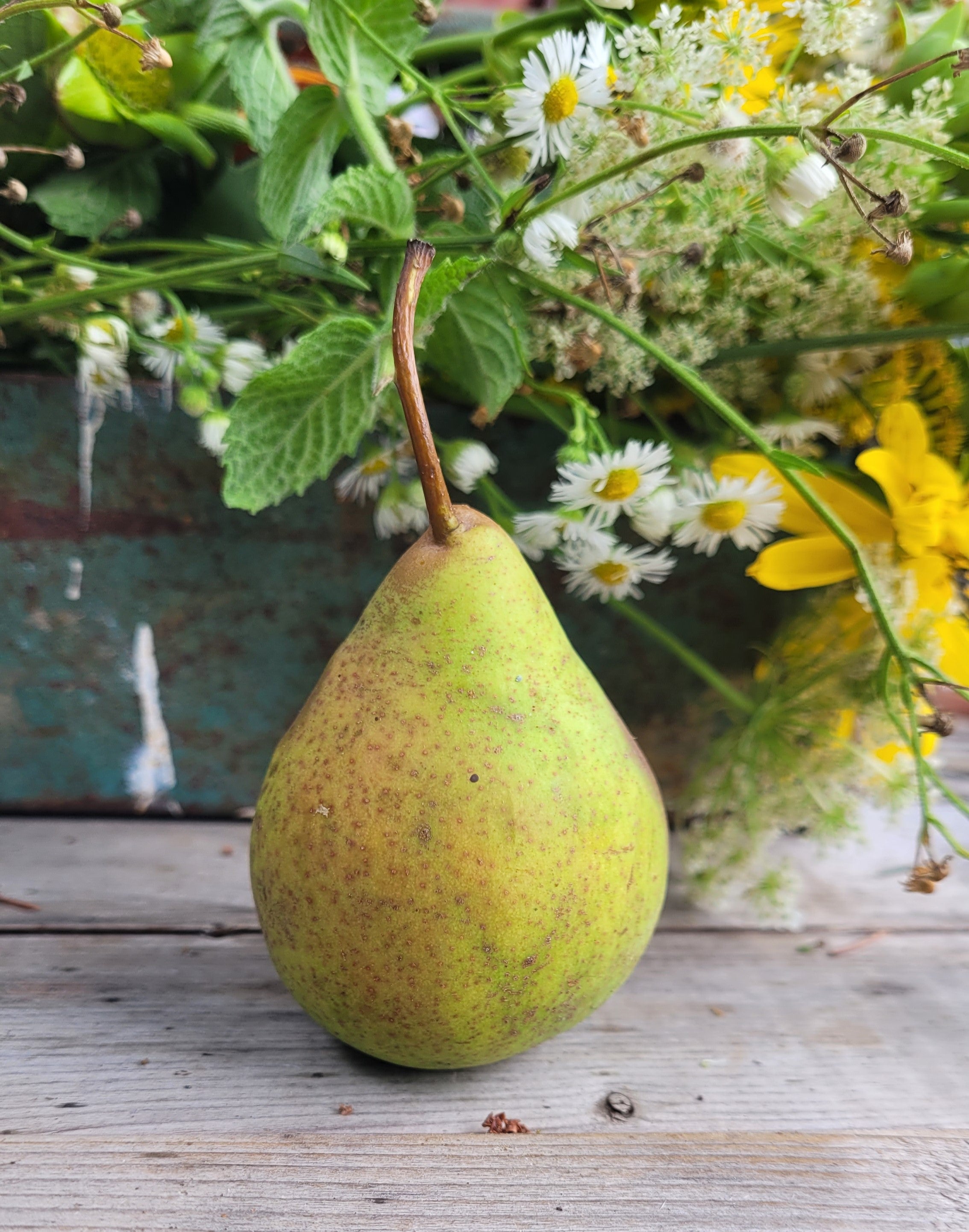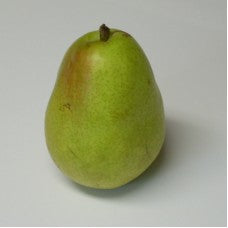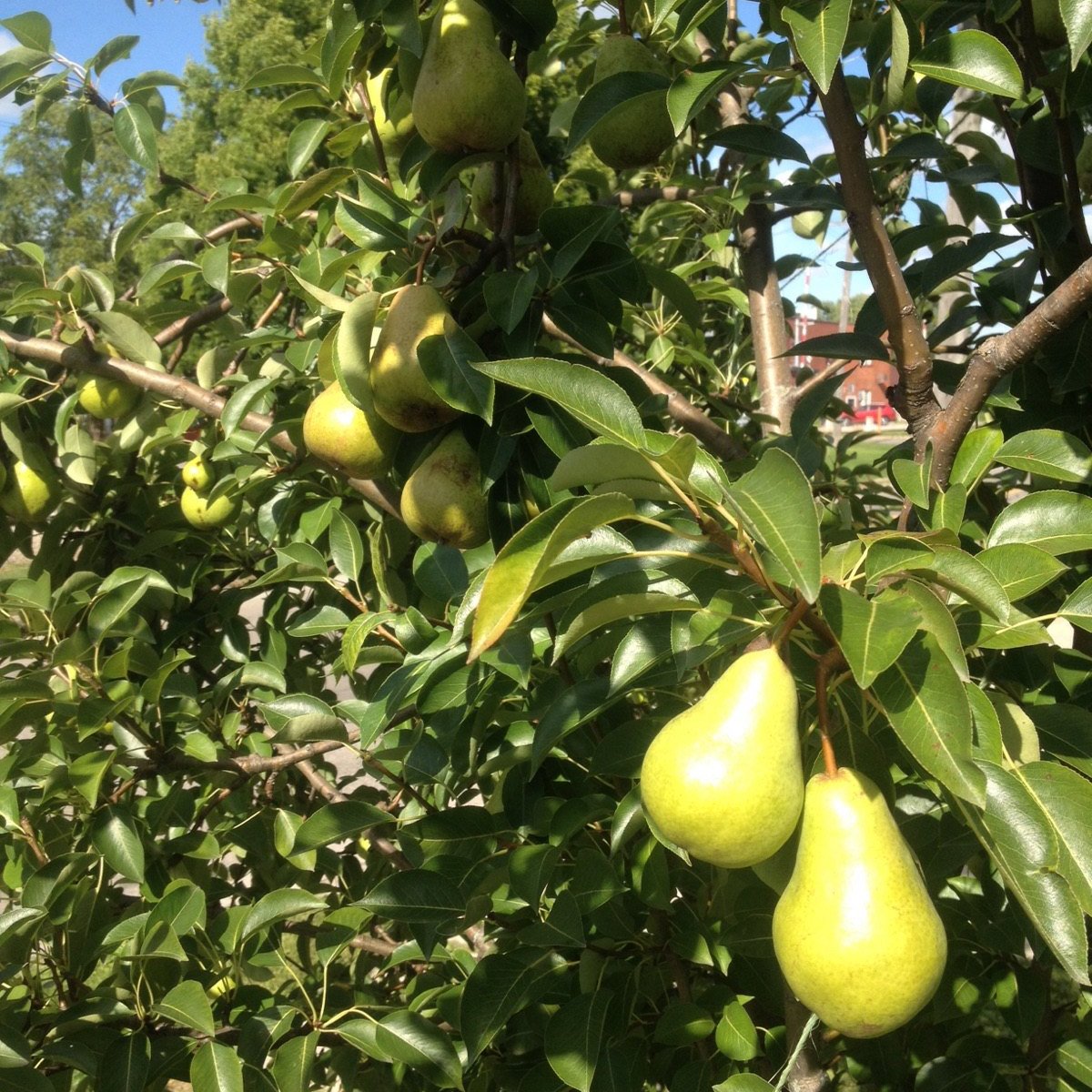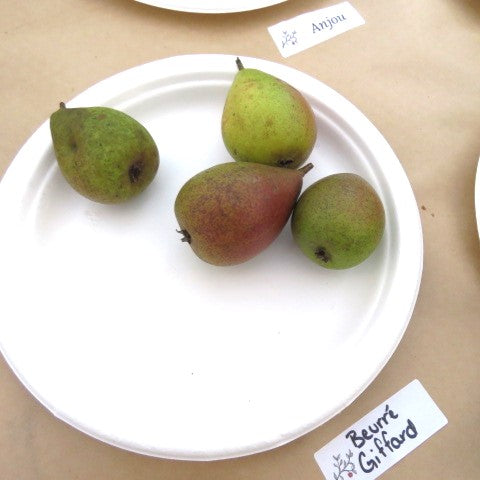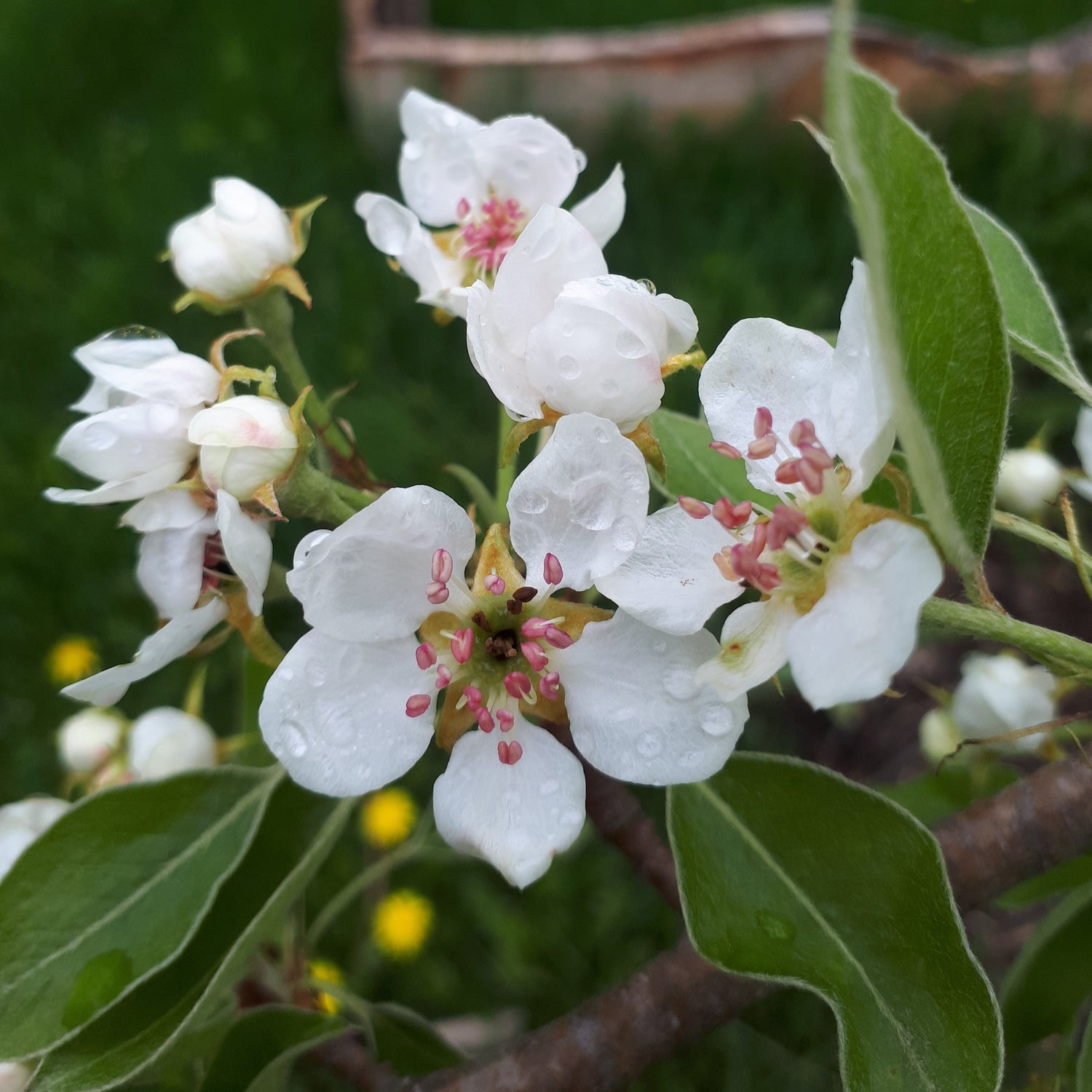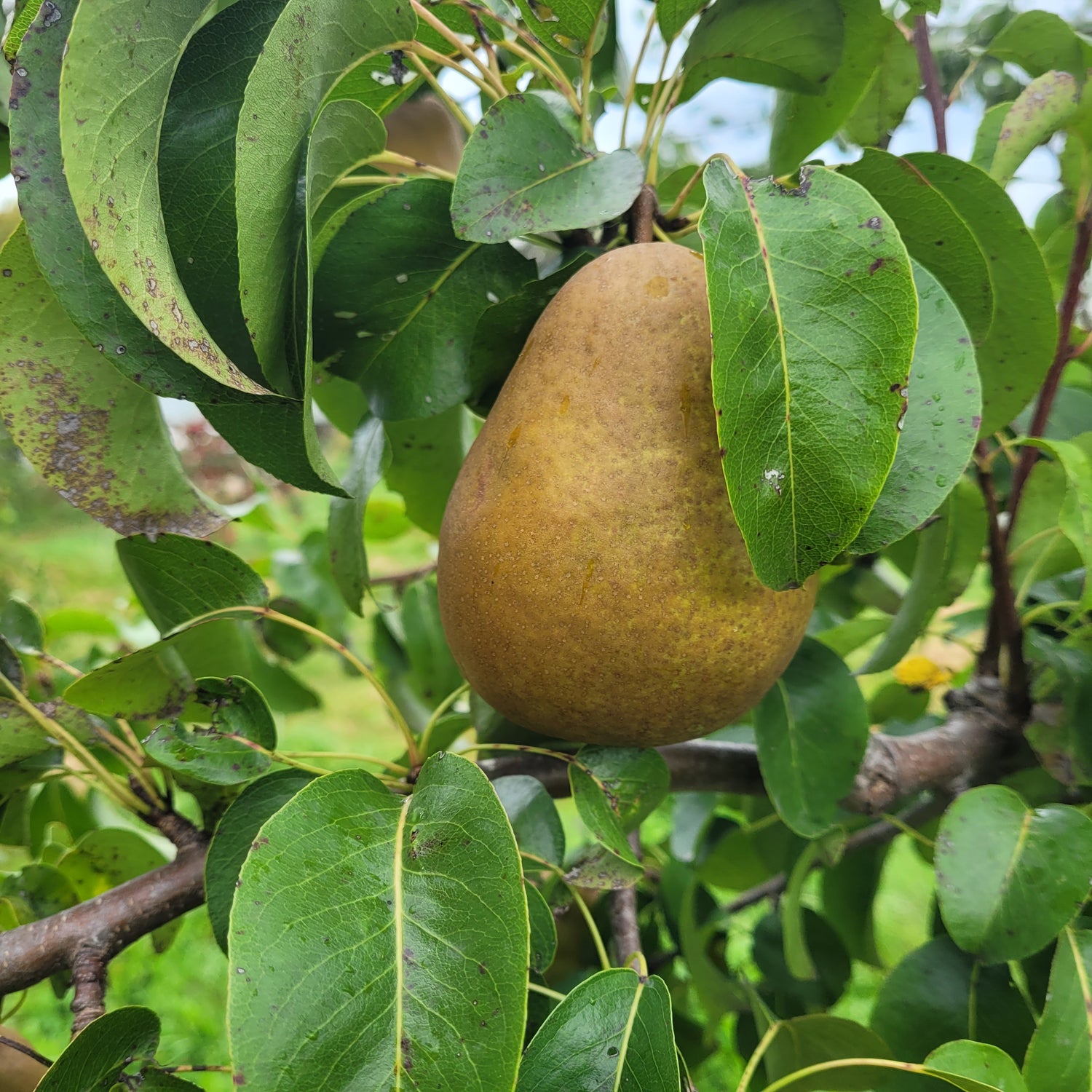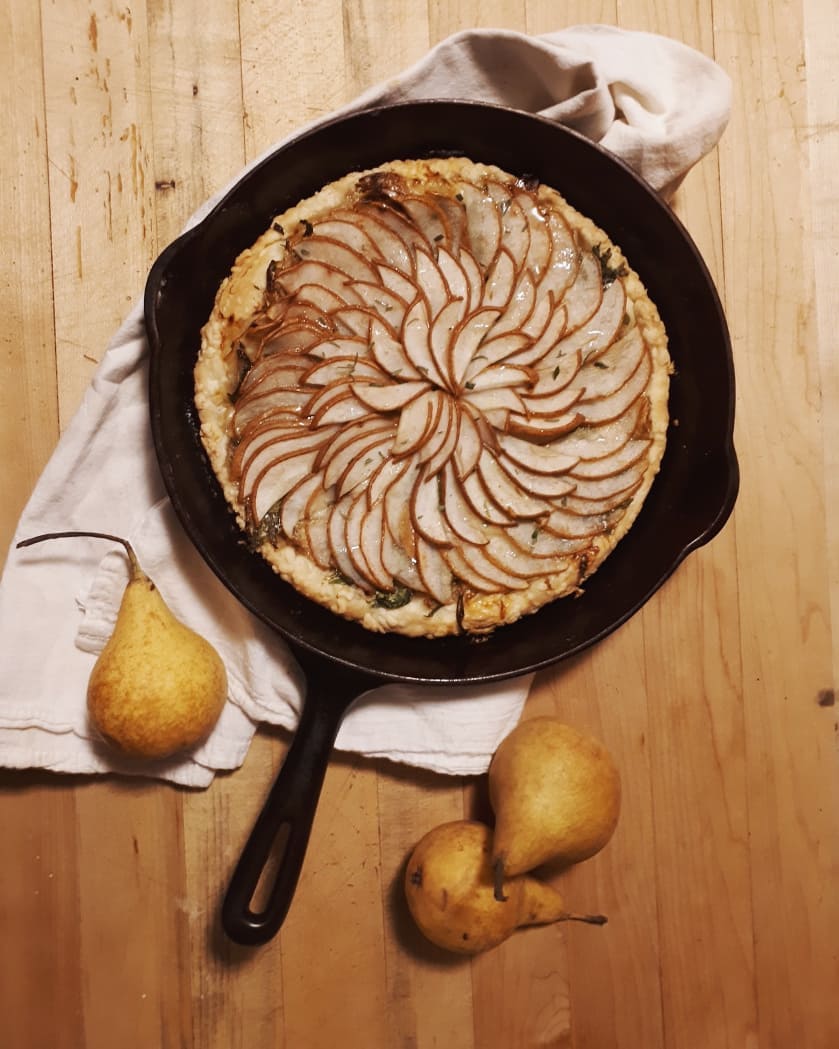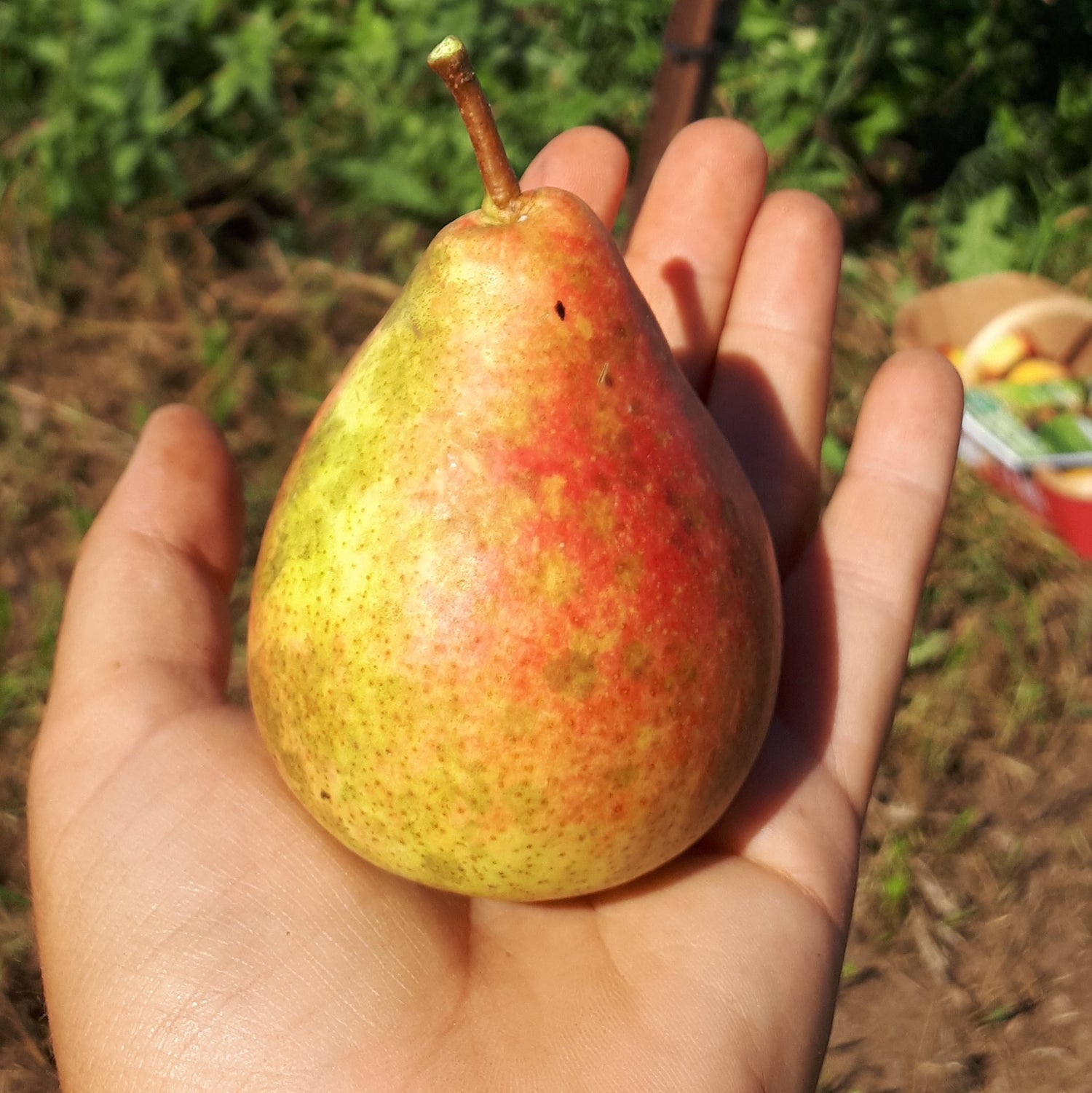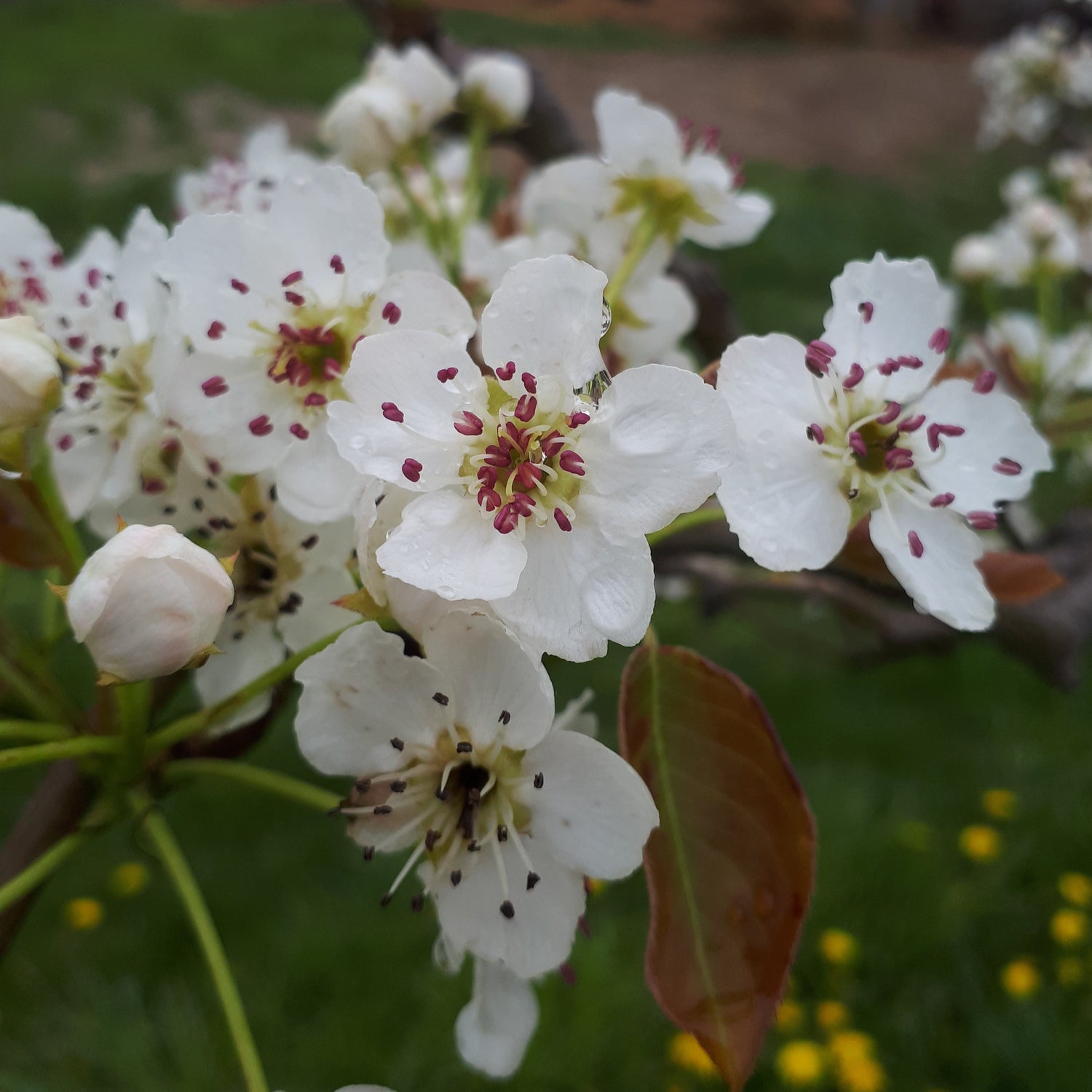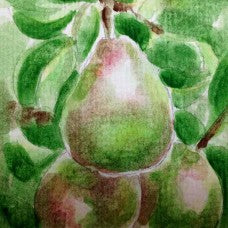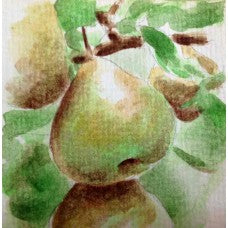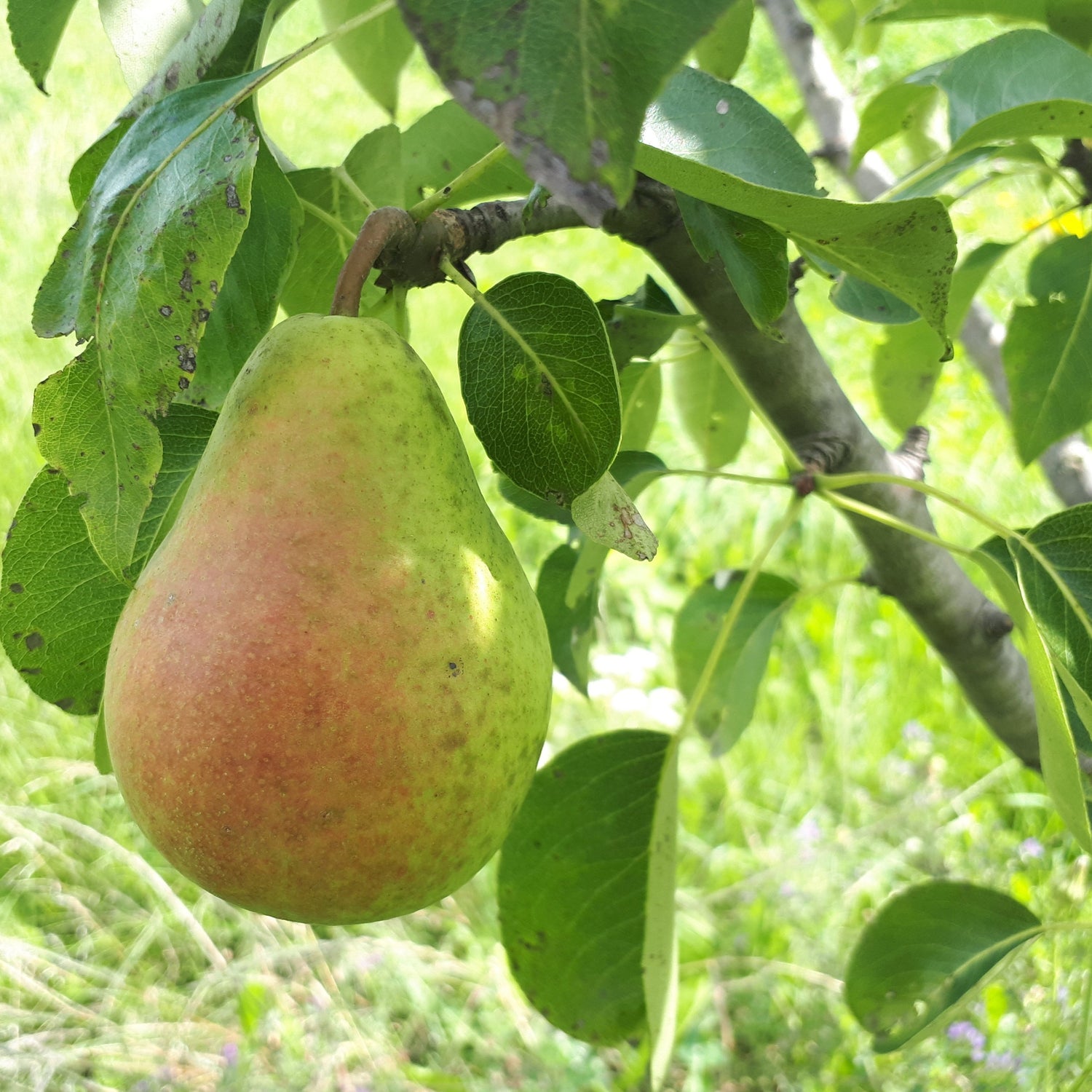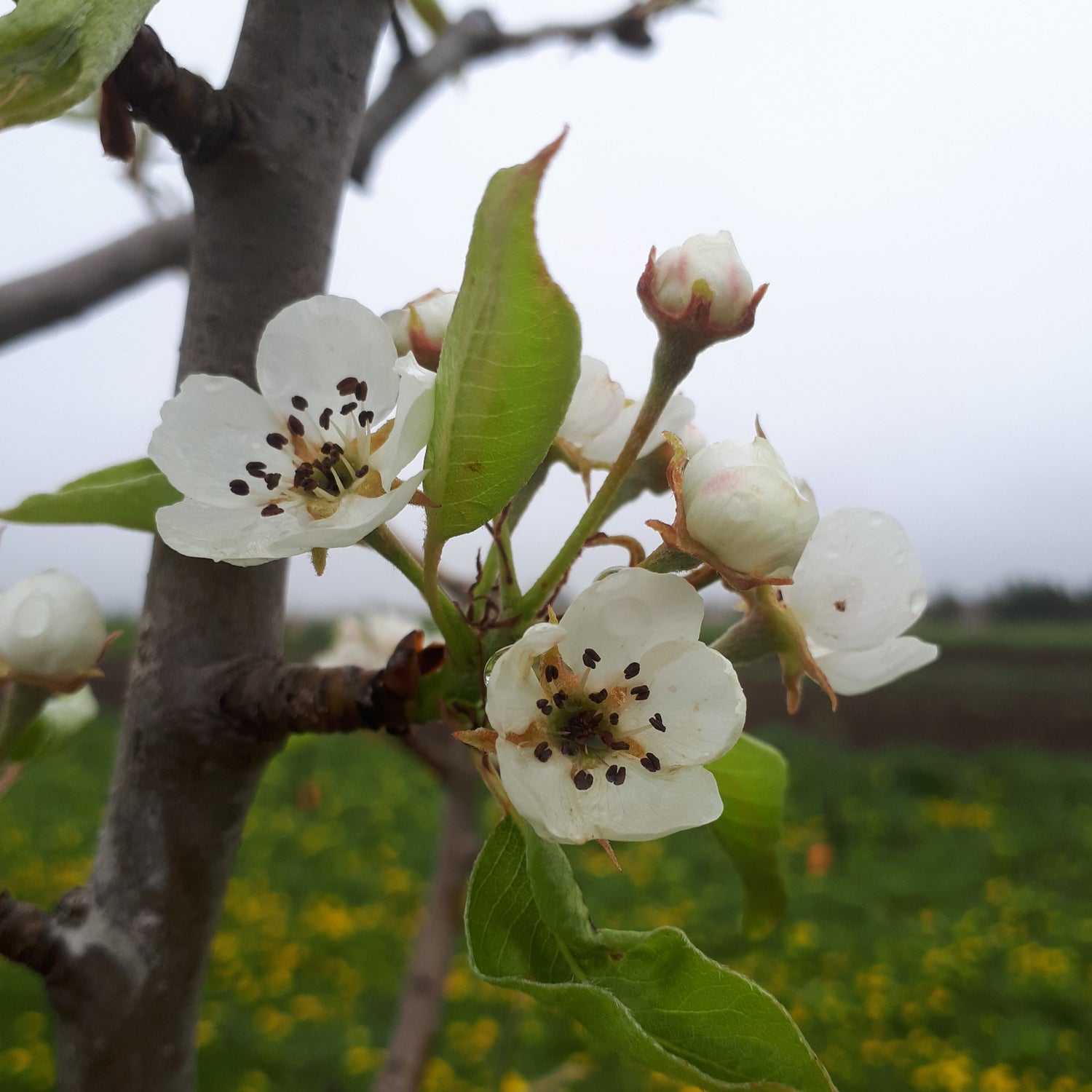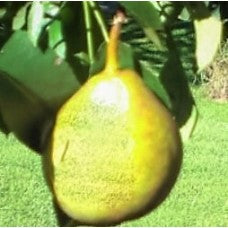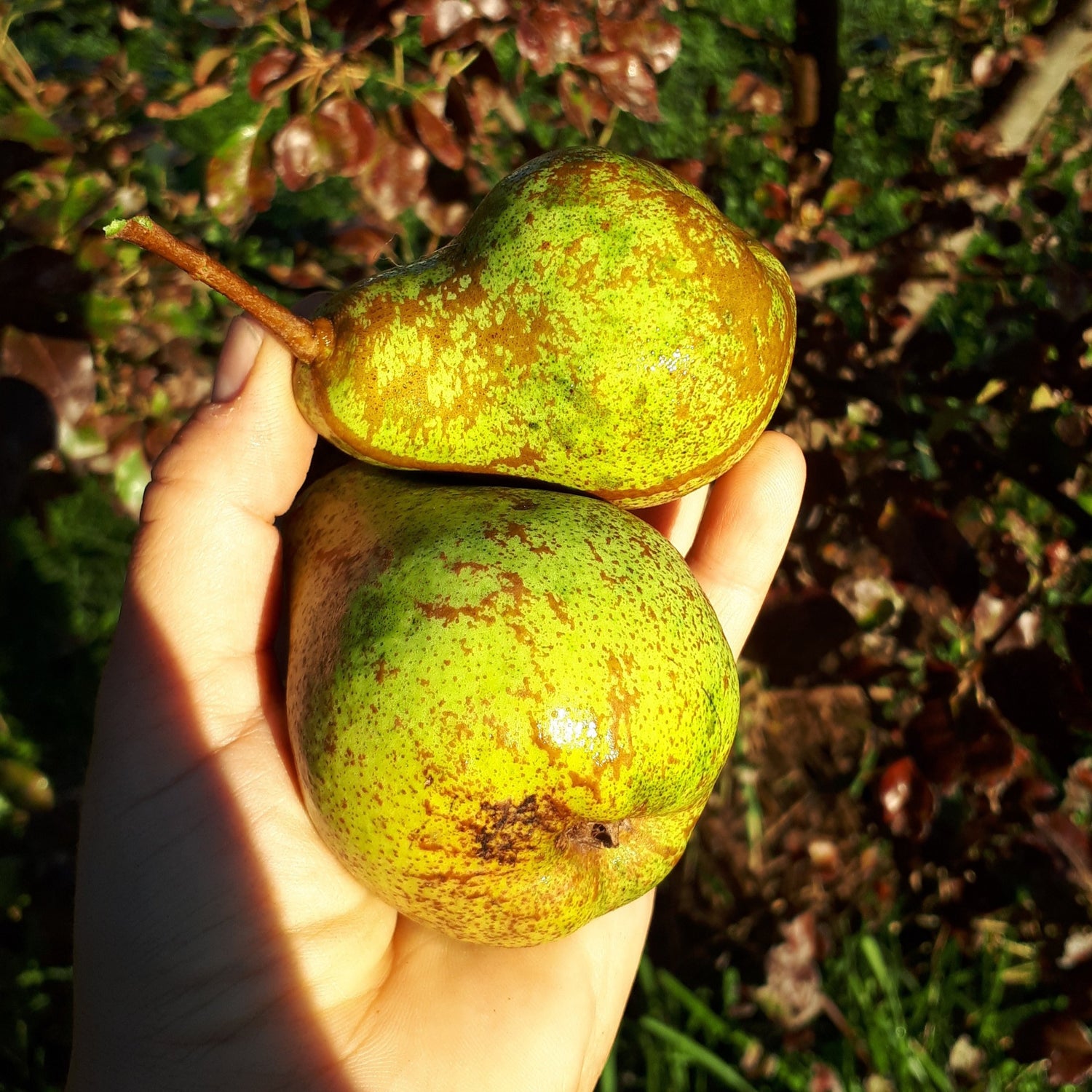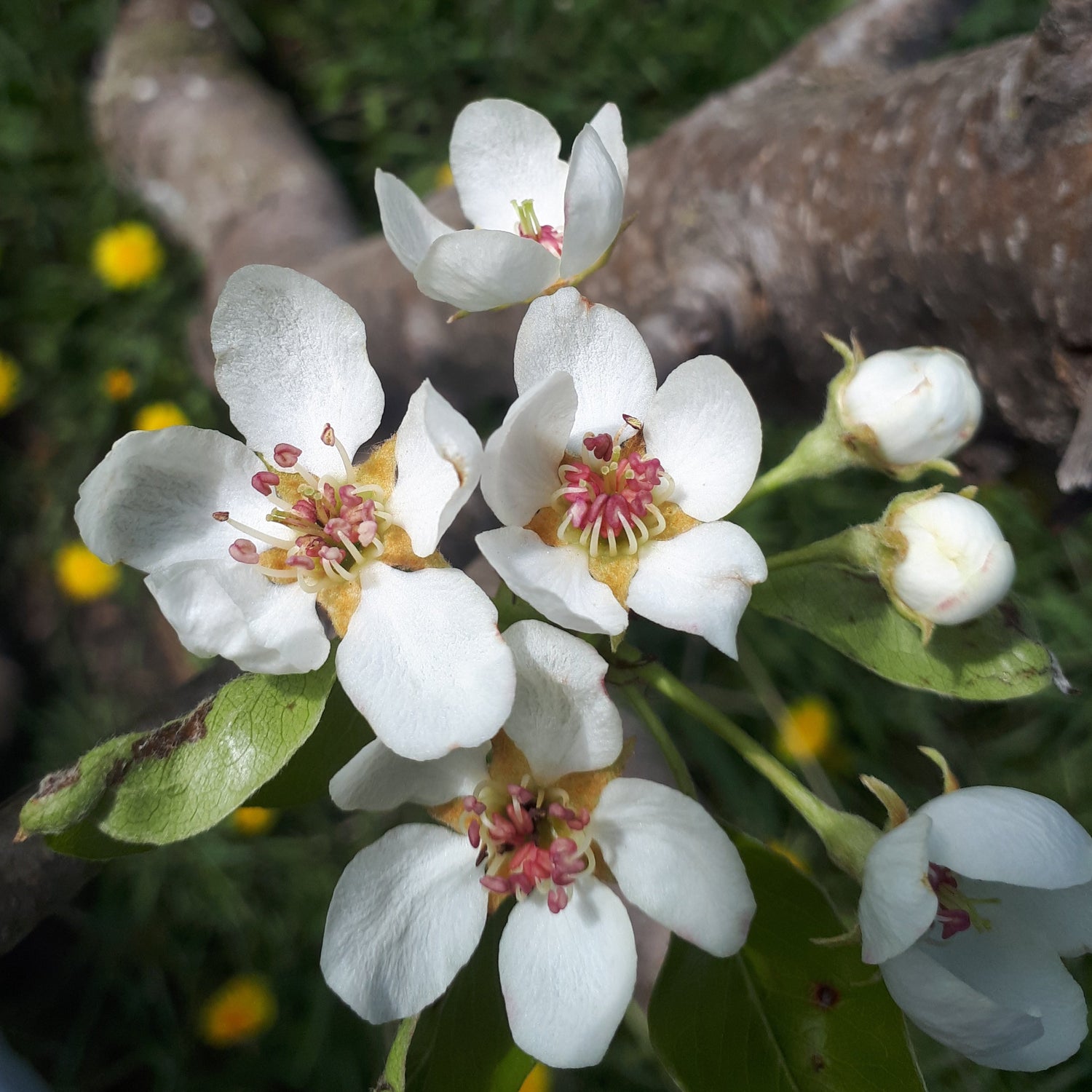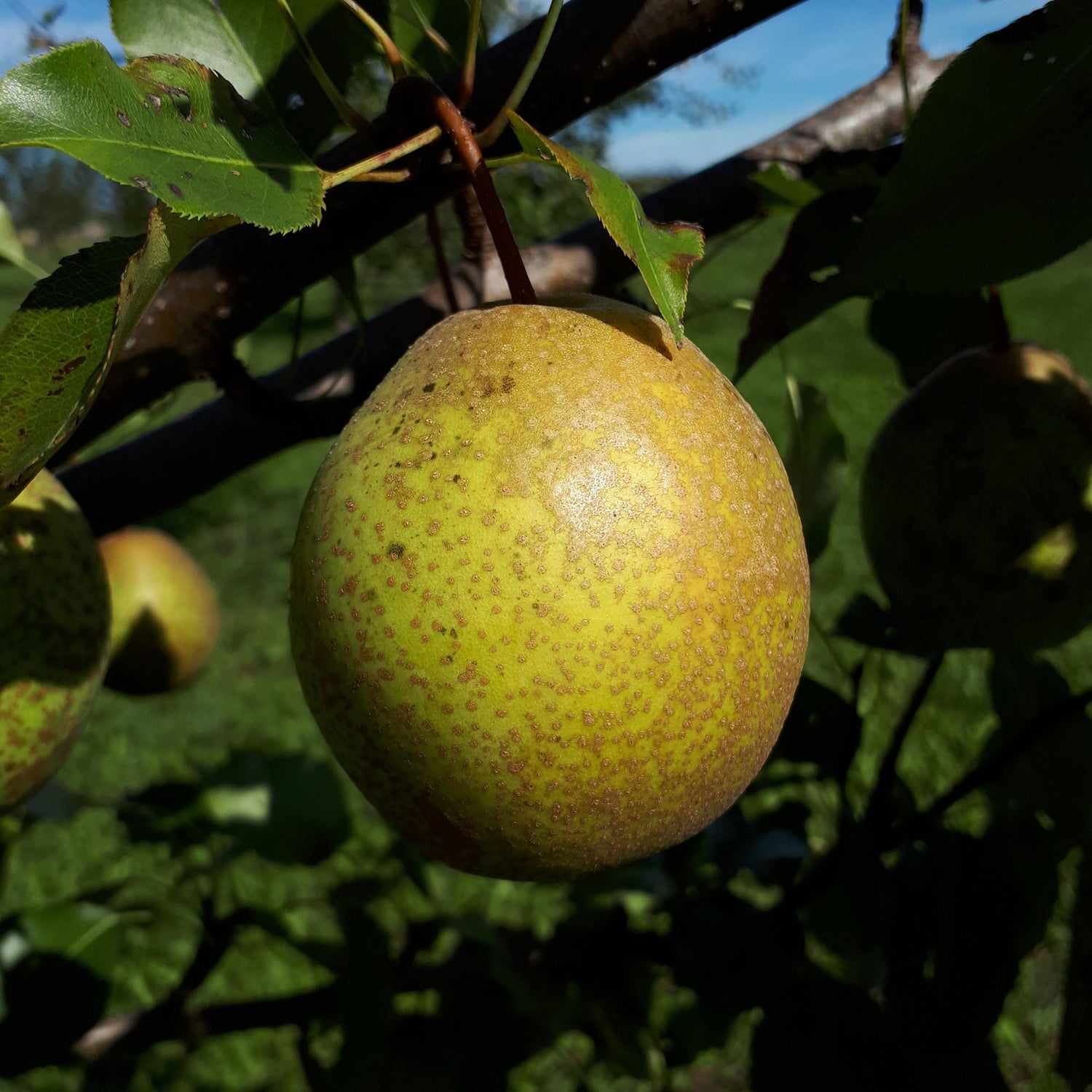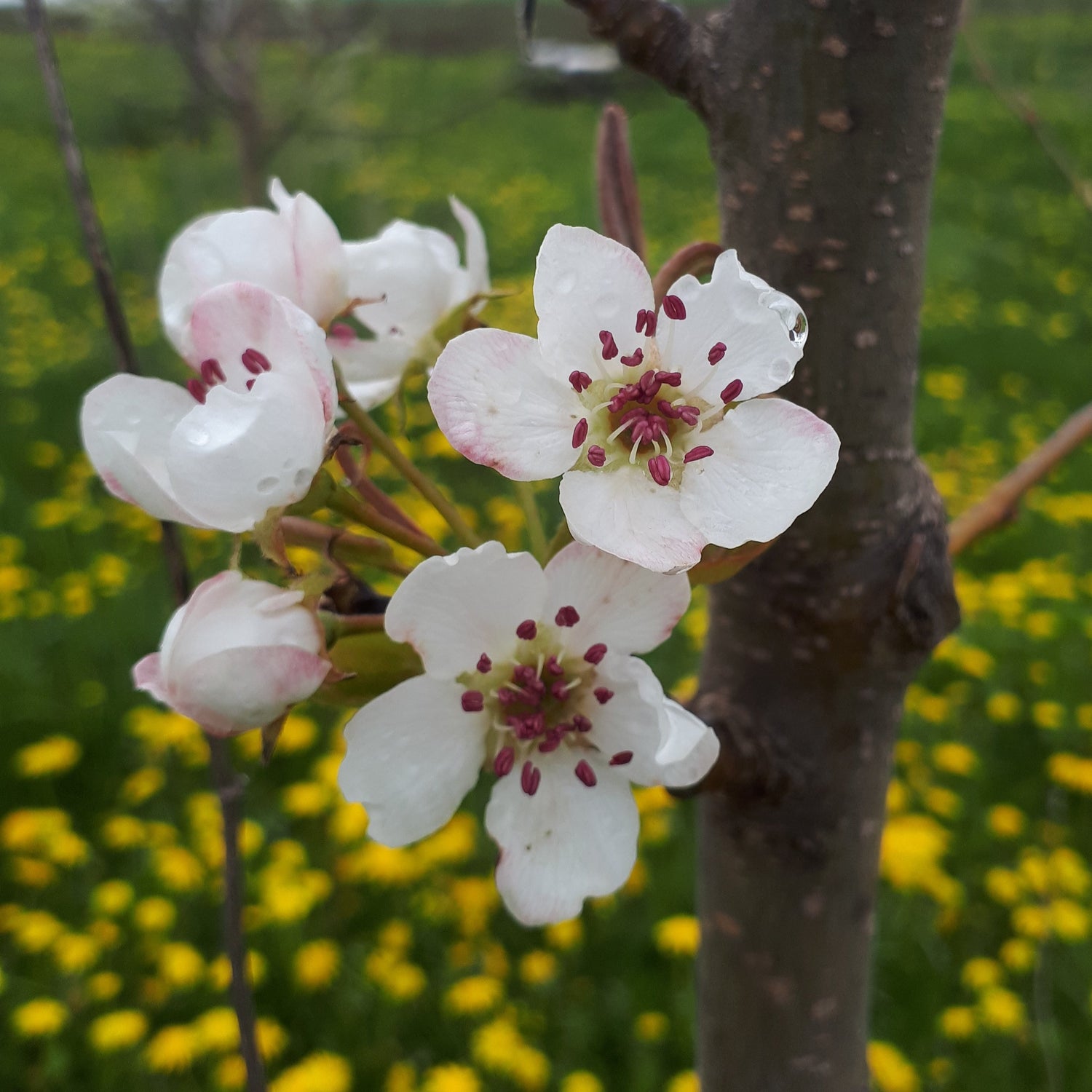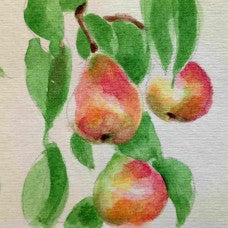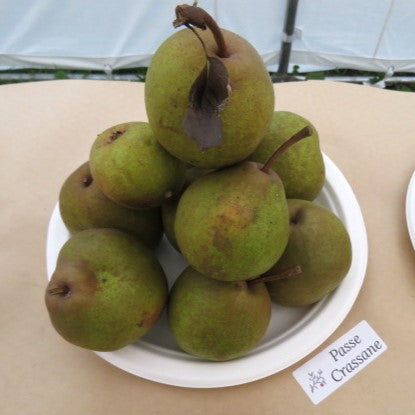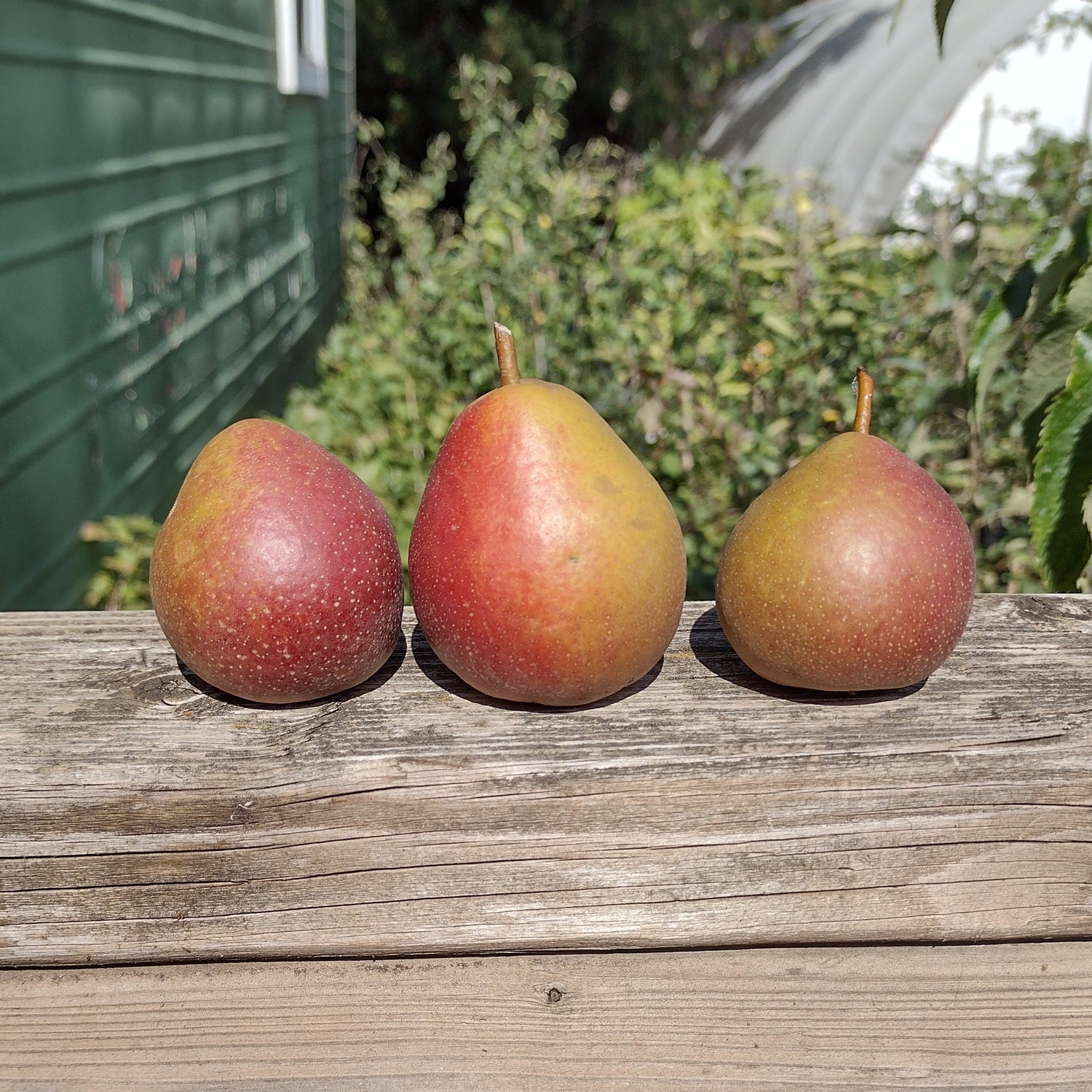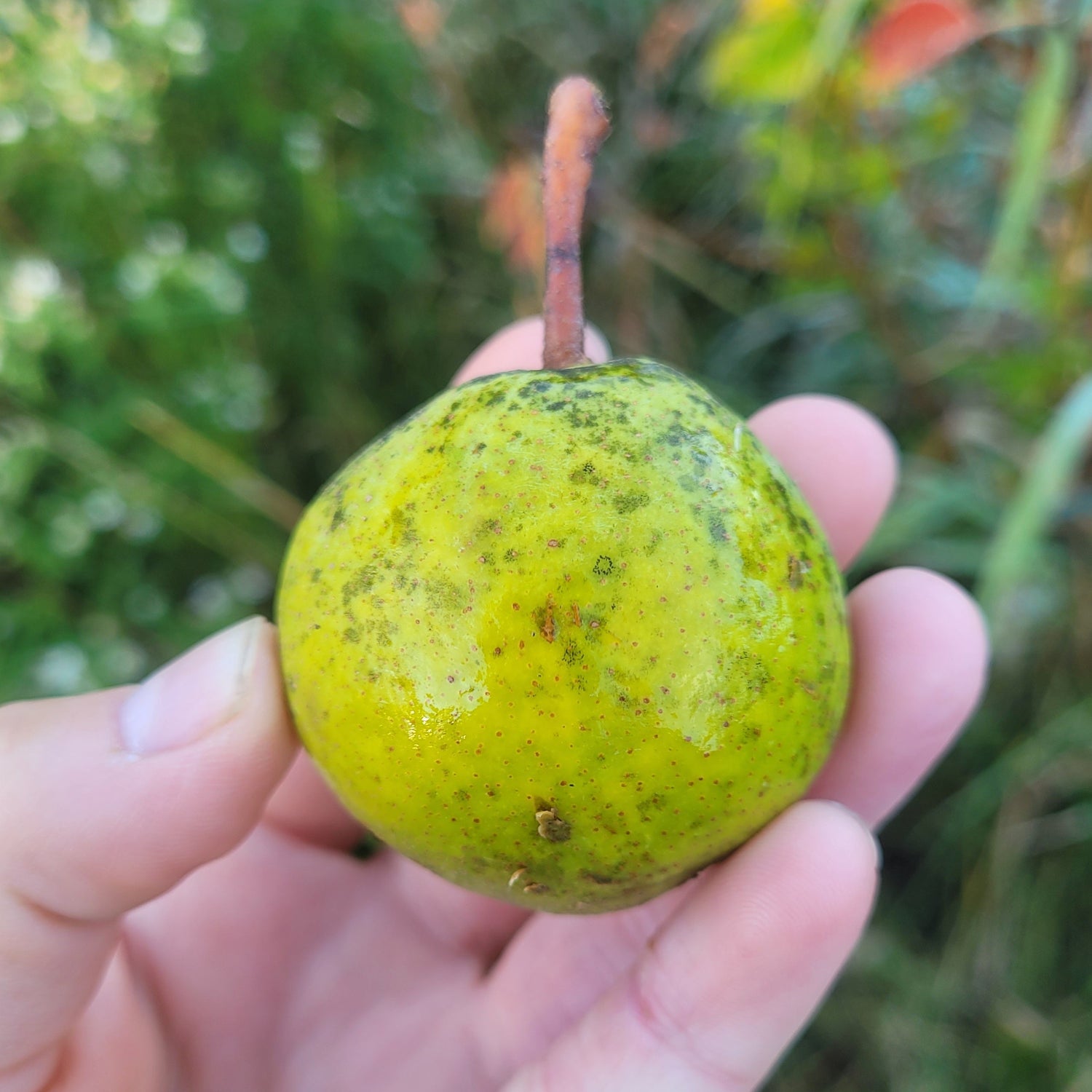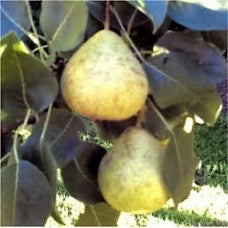Pear Trees
European Pear Trees
Pyrus communis
A pear tree is an excellent addition to the backyard or orchard. Although slow to start bearing, pears are hardy and reliable producers requiring less attention than other types of fruit trees. Each of these varieties requires a pollinator.
Asian Pear Trees
Pyrus pyrifolia
Resembling their more-familiar European cousins, Asian pears are distinct in their texture and mild flavour. The fruit is often larger, and sometimes round in shape like an apple. Each variety requires a pollinator.
Sort by:
33 of 44 products
33 of 44 products
History: Anjou is an older variety of pear that likely originated in France or Belgium in the mid-1800s. They were originally called 'Nec Plus Meuris' but at some point adopted the name Anjou (or d'Anjou or Beurre d'Anjou) after the French region when introduced to England or the US. Anjou pears are still quite popular and are one of the most commonly grown pears in the United States.
Why We Grow It: Anjou is a popular pear due to its good eating quality and flavour. The skin is greenish yellow, and the flesh is firm and sports a hint of yellow. The fruit keeps well and the tree is vigorous and hardy.
History: Bartlett pear, better known as William's Bon Chretien (translated from French as William's Good Christian) or William's pear in Europe, has a long history with unknown origins. What we do know is that in 1483 King Louis XI summoned holy man Francis of Paola to his deathbed and Francis offered the king a pear seed from his birthplace of Calabria in Italy. The name 'Good Christian' was given to the pear as a result. In 1799, this variety was brought to Roxbury, Massachusetts where it was planted and eventually renamed 'Bartlett' by Enoch Bartlett who was unaware of its origins. The mistake was not realized until 1828, by which time "Bartlett" pears were already popular in North America and the mistake could not be undone.
Why We Grow It: Bartlett is the most commonly grown pear in North America and with good reason. Not only is it productive and easy to grow, but it produces large yellow fruit with a delectable flavour.
Note: We graft our Dwarf Bartletts with an Old Home interstem to maintain compatibility between Province Quince rootstock and Bartlett.
History: Beurré Giffard was discovered as a chance seedling by Nicolas Giffard in 1825 in France. "Beurré" translates from French as "butter-like," referring to the smooth, juicy flesh that was typical of pears developed at this time in France and Belgium. It was later introduced to the United States in 1850.
Why We Grow It: This French heirloom pear is one of the earliest ripening pears we offer. Its sweet, melting yet crisp flesh is similar to Bartlett with an excellent flavour.
History: Beurré Hardy was cultivated in France around 1820 by a Monsieur Bonnet and was named after Julien Alexandre Hardy, the director of the Luxembourg Gardens located in Paris. "Beurré" translates from French as "butter-like," referring to the smooth, juicy flesh that was typical of pears developed at this time in France and Belgium. It is considered a classic French fresh-eating pear and remains popular to this day.
Why We Grow It: Beurré Hardy produces a sweet, aromatic pear with white/pinkish flesh that has a hint of rosewater. It grows quickly but can take a while to start fruiting, although once it does it produces reliably heavy crops when grown in warm areas. Its blooms are tolerant of late spring frosts although it isn't always a very reliable pollination partner.
History: Bonne Louise de Jersey originated from Avranches in Normandy, France in the 1780s. It was originally known as Bonne Louise d'Avranches until it was taken to Jersey in the Channel Islands. As it grew in popularity in the UK, it was given the name Bonne Louise de Jersey instead.
Why We Grow It: Bonne Louise de Jersey is a rich, buttery pear that produces a juicy, red blushed fruit. In spring, this pear is also adorned with a profusion of notably attractive blossoms, adding a nice touch to any landscape. Although the tree is less vigorous than some other pears, this makes it suitable for potting and espalier.
History: Bosc pears have an unclear history, either originating from Belgium or France. Some say that an M. Bosc in Belgium grew it from seed around 1807 while others believe it was found as an old tree in France in the 1830s and named after horticulturalist Louis Bosc. Bosc's alternate names 'Beurre Bosc' refer to its buttery texture and 'Calebasse Bosc' refers to its gourd-like shape. Regardless of its origins, Bosc has remained popular and is grown in numerous countries around the world.
Why We Grow It: Bosc pears are long and slender with golden brown russetted skin. The flesh is of high quality, very sweet, and the pears store much better than most varieties. They can also be used to make a lovely tart, with a sprinkle of thyme for a savory delight!
History: Butirra Precoce Morettini was bred as a cross between Coscia and Bartlett in 1956 by A. Morettini as part of an Italian breeding program. It is mainly grown in Italy, Spain, and Portugal.
Why We Grow It: This is an excellent early ripening pear that is sweet and juicy, with crunchy medium-fine grained flesh which mellows in storage to a delectable buttery texture. It has mild floral notes, with just the right amount of sweetness. The tree produces reliable and heavy crops of yellow fruit with a vibrant red flush that store decently well.
History: Chojuro (translated from Japanese as 'plentiful') was found as a chance seedling in the orchard of Toma Tatsujiro in Japan around 1895. From there it became the most popular pear in Japan until modern varieties began to supplant it in the 1950s. In Kawasaki, the city where Toma's orchard was located, a monument still stands to commemorate his work as a pear breeder. Chojuro is the most popular Asian pear in North America.
Why We Grow It: This popular Japanese heritage variety is hard to turn down. The flattish round fruit has russeted brown skin and can be quite large, and is excellent quality when the fruit is left to ripen into October: the sweet, crisp flesh takes on notes of butterscotch and/or white freezie! We recommend picking it when the colours turns yellow-brown so it will store through winter, otherwise it does not keep if allowed to over-ripen on the tree.
History: Doyenné du Comice was obtained from a garden in Angers in the 1840s as a sapling. In 1848 it bore its first pears which were quickly noted for their excellent flavour. Throughout the 1850s this variety reached other countries such as the UK and US, and in 1894 it was deemed "the best pear in the world" by the London Horticultural Journal. Whether or not it lives up to that much praise, it is still commonly grown, particularly in France.
Why We Grow It: It is certainly enticing to grow and eat what is considered one of the finest dessert pears. The fruit is medium in size with pale yellow skin and juicy, pale yellow flesh. It needs to ripen off the tree for about one month.
History: This is an old perry pear that has been known since the 1800s in Austria and Northern Switzerland. It was first recorded in 1854 and the name Gelbmostler means "yellow most pear."
Why We Grow It: Although the fruit doesn't keep well, it is prized for its high disease resistance, juiciness, and astringent flavour. The skin is greenish-yellow, speckled with russet spots. It has a sugar content of 10-11% by weight.
History: Harrow Delight, as the name suggests, was introduced from the pear breeding program at the Harrow Research and Development Center in Ontario in 1981. It is a cross between Bartlett and Purdue 80-51, making it a sibling to Harrow Sweet.
Why We Grow It: Harrow Delight pears are green with red blush when mature. They have sweet, juicy flesh and keep about a month. The tree boasts resistance to both fireblight and scab, making it a good option for anyone looking for a more disease resistant pear variety.
History: Hendre Huffcap was first recorded in England either in 1923 or 1963. The confusion stems from whether it and another variety called Lumberskull, which was recorded first in 1923, are actually the same variety. Hendre Huffcap remains a popular perry pear in England.
Why We Grow It: This popular English perry pear has endured due to the high quality juice it produces which is great on its own and in blends. The tree bears heavily and reliably, although some thinning is recommended since the branches can break under the weight of its own crops.
History: Jules d'Airoles was first discovered by Leon Leclerc in Laval, France, in 1836. It was named after Jules de Liron d'Airoles, a notable French horticulturalist and pomologist. Confusingly, this pear shares its name with a Belgian variety grown about twenty years later by François-Xavier Grégoire-Nélis.
Why We Grow It: This pear develops in storage to a wonderful treat: very sweet and a touch tangy, semi-fine juicy flesh, with pleasant tannic notes depending on the terroir. Smooth, thick green skin with a lovely rose blush where the sun touches the fruit.
History: Packham's Triumph were created by Charles Packham in 1896 in the town of Molong, located in Australia. His goal was to create a late-ripening pear and this popular pear proves he was indeed triumphant. This pear is most commonly grown in the southern hemisphere and the town of Molong is quite proud that such a beloved variety is part of their history.
Why We Grow It: Packham's Triumph is bright-yellow with russet mottling and smooth, white, juicy flesh that has an excellent flavour and smooth texture. The tree produces heavy and reliable crops.
History: The Passe Crassane pear originated in France where it was grown by Louis Boisbunel in 1845 and first bore fruit in 1855. It quickly became popular and was grown in France, Italy, and Spain and commonly exported to Germany and England. The stems were sealed with a red wax to keep in moisture during the pear's long ripening period which became a symbol of the variety. Although its susceptibility to blight has caused its popularity to decline since then, it is still grown on a small scale in parts of France and Italy.
Why We Grow It: This French winter pear is aromatic, floral, and fruity with a melting texture. It is best enjoyed after 4-5 months in storage, usually around February to March. Although the tree is hardy, it is susceptible to mildew and fireblight.
History: Ping Guo Li (translated from Mandarin as 'apple pear') was developed by Jilin Sheng in China and likely named for its round, apple-like shape. While its exact age is unknown, this pear is considered to be an old variety.
Why We Grow It: This Asian pear is nothing but sweet and juicy melting goodness! Its flavour is quite sweet and is comparable to that of a European pear. So far it has performed very well in our test orchard and displays good cold-hardiness.
History: The history of the Seckel pear is somewhat contentious. It was said to have been named after a Mr. Seckel who discovered the variety growing as a sapling near Philadelphia in the late 1700s or early 1800s. Some say it is the only commercial American pear since it was thought to have been a wild seedling but others believe the tree sprouted from a seed left by German immigrants. Either way, this lovely little pear is still grown on a small scale across the States as a specialty fruit.
Why We Grow It: Although it is small in size, this heirloom is popular for eating fresh due to its high quality flavour. The skin is ruddy green with a pronounced red blush and the flesh is very sweet with a spicy flavour, which is why it's sometimes called 'Sugar Pear.' Aside from being excellent for fresh eating, this pear is great canned, pickled, and spiced. As an added bonus, the tree is resistant to fireblight.
Customer Suggestion: One of our wonderful customers shared a recipe for Pickled 'Sickle Pears' (aka Seckel) that had been passed down from his great grandmother. We haven't tested it out yet, but Seckel pears, brown sugar, cinnamon, vinegar and cloves, cooked and marinated, then pickled sounds very intriguing! Thanks for sharing David!
History: Little is known about the origins of Taynton Squash. Its name is derived from the village of Taynton in England where it was discovered at the parish. It was possibly discovered at some point in the 17th century as writings on it from 1811 describe it as an old variety. It was noted at the time for producing an excellent perry although now it is considered rather average.
Why We Grow It: This ancient English perry pear produces 4-5cm round green fruits in heavy crops. They should be blet for two days at most before being turned into perry, of which they make an average quality single-variety perry.
History: Thorne was discovered in Gloucestershire, England, in 1670. It was originally grown for cooking and fresh eating but is now primarily used to make perry. It is still commonly grown for perry production in England today.
Why We Grow It: This is the most reliable of the English perry pears for Canadian growing. Although this pear can be eaten fresh, it packs an astringent punch and is best made into a good perry instead.
Collections
Pyrus pyrifolia
Asian pears are wonderful low maintenance trees! They are regular, prolific producers in our test orchards. Asian pears, sometimes called Apple Pears, are crunchy and sweet, with a mild flavour. While some pears are partially self fertile, we recommend planting at least two different cultivars for reliable pollination; European and Asian pears do cross pollinate.
Pyrus communis
A pear tree is an excellent addition to the backyard or orchard. Although slow to start bearing, pears are hardy and reliable producers requiring less attention than most other types of fruit trees. While some pears are partially self fertile, we recommend planting at least two different cultivars for reliable pollination; European and Asian pears do cross pollinate. Pears ripen from the inside out, and therefore typically should be picked when the fruit is still a bit hard. They then can fully ripen off the tree - especially important if it is a winter pear. A slight softening at the stem end will indicate the fruit ripe.
Similar to to cider apples, perry pears are pears that are best suited to making an alcoholic beverage known as perry or pear cider. While not a great option for fresh eating, many of the pears here are heirloom varieties that have stood the test of time for perry production. Pears generally require two varieties for pollination.
Juice Classification
- Bittersharp: acidity TA >4.5g/L, tannins >2g/L
- Bittersweet: acidity TA 2-6g/L, tannins >2g/L
- Medium: acidity TA 2-6g/L, tannins <1.5 g/L
- Sweet: acidity TA <2 g/L, tannins <1.5 g/L

